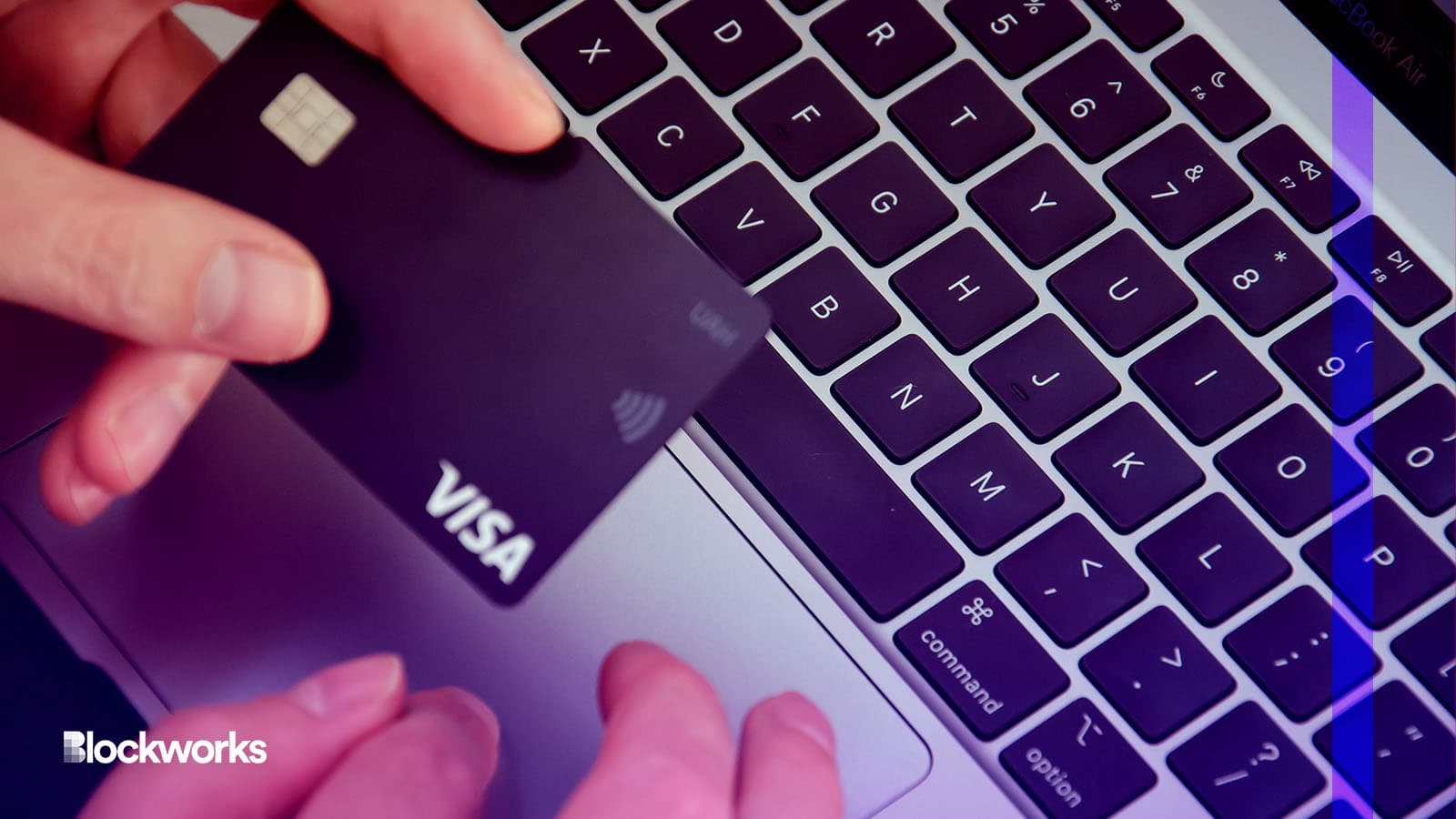Ethereum gas fees? Charge it, please! Visa proposes to let you pay with card
By simplifying the transaction processes on-chain, Visa hopes more users will adopt the payment method

Ksjundra07/Shutterstock, modified by Blockworks
Visa has wrapped up testing a way for users to pay on-chain gas fees directly in fiat with a credit or debit card, the payments giant said on Thursday.
The experiment, which was conducted on the Ethereum Goerli testnet, uses a paymaster contract to sponsor gas fees on behalf of users, according to a statement.
It means users can send blockchain transactions without having to worry about maintaining a balance of ether. Visa believes the contract could make transactions more accessible to a wider range of users.
“Our experiment aims to offer a promising approach to substantially addressing the challenges of blockchain-based transactions,” Visa’s technical team wrote. “By leveraging the innovative concept of a paymaster, in conjunction with account abstraction and the ERC-4337 standard, we explored the potential for a process that could redefine blockchain-based transactions.”
A paymaster contract is a specialized type of smart contract within the blockchain ecosystem, designed to manage the payment of gas fees.
The company said merchants or decentralized applications (dapps) could run their own paymaster solution, or existing wallet and paymaster service providers could offer a card-based gas fee payment choice alongside their other paymaster offerings.
The experiment is part of Visa’s ongoing development within the industry. The company has been working on ways to make blockchain payments more user-friendly and accessible.
Visa reportedly began experimenting with converting digital assets into fiat payments on the Ethereum blockchain earlier this year. The aim is to parallel its current foreign currency exchange processes, as part of its broader push to build proficiency in global settlements involving both digital and traditional currencies.
In the context of transactions on blockchains like Ethereum, every operation conducted incurs a cost known as a “gas” fee, representing the computational effort required to execute the operation. Gas fees help keep the Ethereum network secure by making it costly for bad actors to spam the network.
Since inception, network fees have been a fundamental part of ensuring security and encouraging adoption within first-generation blockchain systems. Though, following ten years of user growth, the hope is the trajectory of Web3 will move towards a “gasless” future.
Get the news in your inbox. Explore Blockworks newsletters:
- The Breakdown: Decoding crypto and the markets. Daily.
- 0xResearch: Alpha in your inbox. Think like an analyst.






